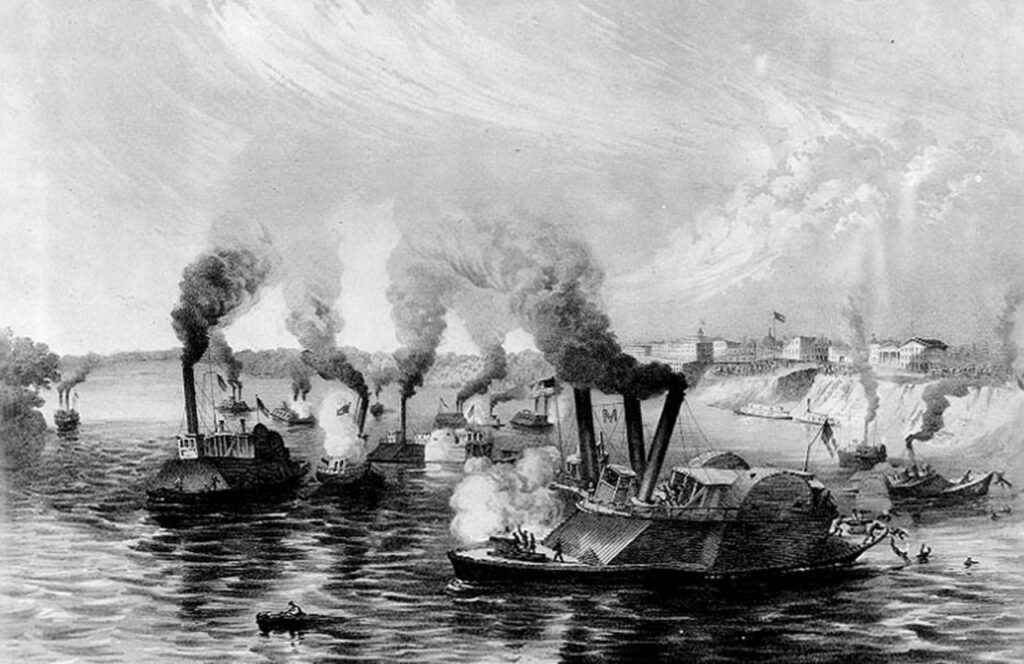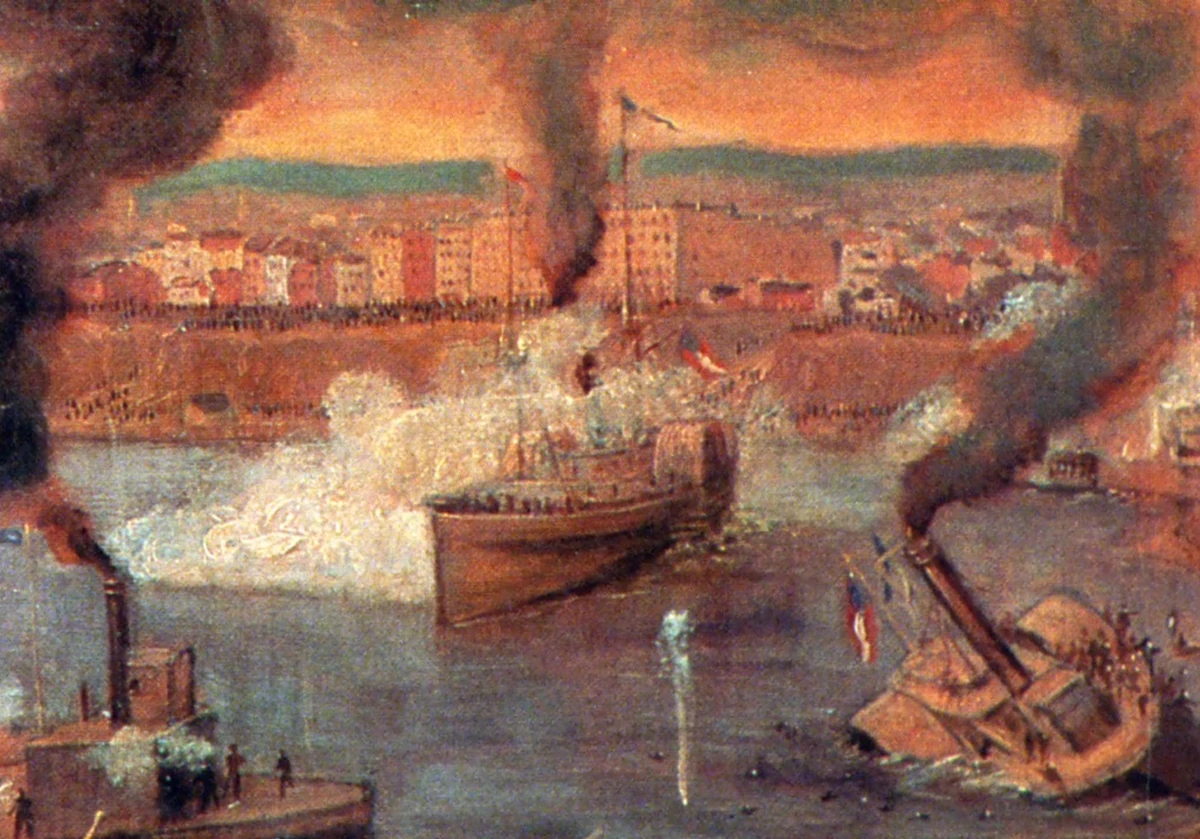By June of 1862, the Civil War was not going well for the Union cause. A string of Union defeats in 1861 dampened the enthusiasm for the Union cause, but a victory at the Battle of Shiloh and the Federal capture of New Orleans was enough to restore hope for the preservation of the Union.

The First Battle of Memphis: The Battle of the Rams
On June 6, 1862, the Union and Confederate Navies would fight a pitched battle on the Mississippi River that would have a resounding significance, not just for the war, but for the future of the U.S. Navy itself. The First Battle of Memphis, also known as “The Battle of the Rams,” would mark the end of privateering in the United States and lead to a purely professional U.S. Navy.
The Mississippi River was a key component of the Union’s plan to cripple the Confederacy and end the rebellion. Called the “Anaconda Plan,” the Union strategy required a blockade of the southern coast and control of the Mississippi River to strangle the South’s ability to wage war effectively.
Union’s Objective: Capturing Vicksburg via Memphis
President Abraham Lincoln declared the southern blockade in 1861, and by 1862, it was fully in place. Although Rear Adm. David Farragut had control of New Orleans, the Union was far from in control of the Mississippi. It would need to capture the Confederate stronghold at Vicksburg first, and to get to Vicksburg, the Union Navy had to go take Memphis.
The Union sent a flotilla of five gunboats under Flag Officer Charles H. Davis, along with four unarmed rams from the U.S. Ram Fleet toward Memphis in June 1862. The command structure of this flotilla was varied at best and, at worst, downright dangerous. The gunboats were staffed by Union naval officers but nominally under the command of the Army. The rams were civilian boats that reported directly to Secretary of War Edwin Stanton.

As any experienced military officer will tell you, the lack of a unified command can mean a potential disaster for any fighting force. Luckily for this ragtag riverine fleet, the Confederates were even worse off. Consisting of just eight rams, they were sent north to avoid capture at New Orleans and to stave off Federal attempts to control the river.

The rebel fleet was under the command of civilian riverboat captain James Montgomery, who had no military experience and relinquished a unified command entirely before the battle. This granted each ram the ability to operate independently, an act that experienced military officers protested, to no avail.
Who Won the Battle of Memphis?
To make matters worse for the Confederates, the civilian captains used Confederate Army gun crews and made no attempts to establish command of the crews or even learn about artillery. The battle became an ugly slugfest when the two fleets met on the river on June 6. Neither side coordinated their movements after the Union flagship Queen of the West rammed the CSS Colonel Lovell.
After hours of fighting, as citizens of Memphis watched, all but one Confederate ram were captured or sunk, with the CSS General Earl Van Dorn fleeing toward Vicksburg. 100 Confederates were killed, and another 150 were captured. Memphis was completely cut off from the rest of the South by land or sea. It would surrender at noon that same day.
On the Union side, The Queen of the West was disabled in the middle of the river, and the Union Navy had only one wounded officer. It was a lopsided victory that ended Confederate challenges to the Union Navy on the Mississippi and opened the way to the Siege of Vicksburg.
Most importantly, the Navy (on either side) would never again allow civilians to command ships in combat and would demand that only trained naval officers, under a unified command, lead sailors into combat.
Read About Other Battlefield Chronicles
If you enjoyed learning about the battle of Memphis, we invite you to read about other battlefield chronicles on our blog. You will also find military book reviews, veterans’ service reflections, famous military units and more on the TogetherWeServed.com blog. If you are a veteran, find your military buddies, view historic boot camp photos, build a printable military service plaque, and more on TogetherWeServed.com today.

0 Comments